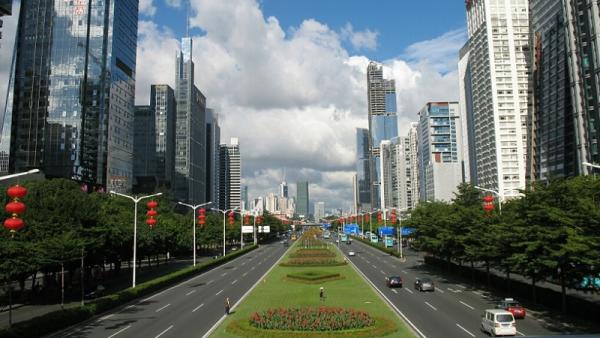
James Laurenceson, Deputy Director, Australia-China Relations Institute, University of Technology Sydney |
This article originally appeared in the Australian Financial Review, January 23 2016.
Since the Shanghai sharemarket burst last June, there's been a striking divergence in positions taken on the direction of China's economy. In the first few weeks of 2016 this divergence has only grown.
It's those who have been studying China's economy the longest, such as Justin Lin at Peking University in Beijing and Nicholas Lardy at the Peterson Institute for International Economics in Washington, who seem the least panicked.
Here's what they know that many other commentators are missing. China's official statistics aren't that bad.
Yes, China's leaders aren't exactly hands-off when it comes to information flows. And that inevitably means that when new economic data are released these tend to be viewed with suspicion.
So it was on Tuesday when it was announced that the economy officially grew by 6.9 per cent in 2015.
Yet in 2014 Carsten Holz, who has made a career out of studying China's economic numbers, at Hong Kong University of Science and Technology, concluded: "Numerous specific allegations have been levied against Chinese GDP statistics, but the evidence invariably does not bear out significant and persistent problems."
Last year The Economist settled on the view that "there is a difference between smoothing data and totally fabricating it. Evidence suggests that China is guilty of the former (the lesser charge) but not the latter (the more serious allegation)".
This week's data release showed consumption accounting for two-thirds of the growth in GDP. Resilient household spending was confirmed by retail sales being up 10.7 per cent over the past year.
And surely those strolling through the malls of Beijing, Shanghai and Chengdu can be relied on to give an unbiased account?
The leading independent gauge of Chinese consumer sentiment is actually produced by Westpac, and not China's National Bureau of Statistics, and it says that shoppers are more confident now than they were a year ago.
Part of the problem is that China's economy has developed so fast that frequently the wrong comparisons are made and the wrong indicators used.
The most abused headline over the past week must be that China is growing at its slowest pace in 25 years. The idea that it should keep growing at the same percentage rate as even five years ago, despite the economy coming off an ever-larger base, defies logic.
Purchasing power
It is far more sensible to look at the purchasing power being added. After all, this is what will buy more Australian beef, dairy, wine, tourism and education. In growing at 6.9 per cent last year, China added 50 per cent more purchasing power than it did in 2010, when it grew at 10.6 per cent.
Until 2011 the secondary sector (industry and construction) was the largest part of China's economy. No surprise then that the purchasing managers index (PMI) for manufacturing came to be watched closely.
But now the share of services has reached 50.5 per cent of GDP, a full 10 percentage points clear of the secondary sector. This means the focus needs to shift to the PMI for services, which indicated month-on-month expansion throughout last year.
Another popular narrative not to be seduced by is the one that says China's government is back-pedalling on market reform.
Developments such as the People's Bank of China burning through $US108 billion ($157 billion) of its reserves in December, to prevent the RMB from falling more rapidly in value against the US dollar, are cited in support of this view.
But how then to explain that according to the Bank of International Settlements the RMB has been allowed to appreciate nearly 30 per cent on a trade-weighted basis since 2010?
And other obvious market breakthroughs have also been achieved, such as the complete liberalisation of interest rates last October.
What the Chinese authorities keenly resist is speculation, not price movements based on fundamentals.
Sure, it's not always easy to spot which is which. But consider the exchange rate again.
It's scarcely been reported that China's trade surplus rose to a record high of $562 billion in 2015, up 57 per cent from 2014. It also attracted its highest-ever level of foreign direct investment, $126 billion, up 6.4 per cent from the year before.
These are not the demand and supply conditions that typically lead to a currency's value plummeting.
Third, while China's institutions might regularly be clumsy, don't underestimate their ability to respond pragmatically to new challenges.
Some like to portray China as a one-trick pony that stumbled on a growth model in the late 1970s – selling to the world low-quality goods produced by cheap labour. But now that wages are rising the country is struggling to move up the value chain.
The Shenzhen model
Those convinced that China is doomed to get stuck in a middle-income trap might want to take a look at Shenzhen in Guangdong Province, just north of Hong Kong.
Previously a low-cost manufacturing hub, Shenzhen now has a GDP per capita of $US24,259. That's just short of South Korea on $US27,971. In 2014, research and development expenditure accounted for 4.02 per cent of Shenzhen's GDP, compared with 0.74 per cent in Hong Kong, SAR. Shenzhen serves as the global headquarters of internet giant Tencent; Huawei, the world's largest telecommunications equipment manufacturer; BGI, the supplier of 50 per cent of the world's gene sequencing capacity; BYD, the world's largest maker of rechargeable batteries; and DJI, producer of 70 per cent of the world's civilian drones.
Amid the more shrill cries about the prospects for China's economy in 2016 and beyond, there might be something to the calm of the old China economy hands after all – people such as Justin Lin and Nicholas Lardy, who follow the long-term patterns, without the short-term distractions.
Author
Professor James Laurenceson is Deputy Director of the Australia-China Relations Institute (ACRI) at the University of Technology Sydney.


